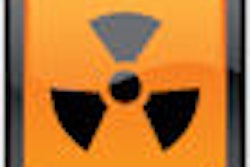While FDG-PET performs well in detecting para-aortic lymph node (PALN) metastasis among patients with a relatively high probability of the disease, the modality falls short in evaluating para-aortic lymph nodes based solely on cervical cancer, according to a new study by Korean researchers.
PET's limitations in assessing para-aortic lymph node metastasis "should be seriously considered in designing future clinical trials for high-risk patients with locally advanced cervical cancer," they concluded.
Their study is published in the March issue of the Journal of Nuclear Medicine (Vol. 51:3, pp. 360-367). The lead author is Dr. Sokbom Kang from the Center of Uterine Cancer in Goyang, South Korea.
Previous research has found that the rate of para-aortic lymph node metastasis is approximately 15% to 30% in patients with locally advanced cervical cancer. Patients with the metastasis typically have lower overall survival, disease-free survival, and survival after recurrence, making an accurate assessment of para-aortic lymph node metastasis critical to radiotherapy planning and strategy.
Surgical staging
While surgical staging has been the gold standard to evaluate para-aortic lymph node metastasis, the procedure also can have adverse effects and morbidities.
Previous studies also have shown that both MRI and CT have low sensitivity, which can impede diagnosis and detection of nodal metastasis. Because MRI and CT have a negative likelihood ratio of 0.5, the images cannot be relied upon to confirm the absence of nodal metastases.
By comparison, the authors noted past research that shows FDG-PET and PET/CT have a greater positive likelihood ratio (15.3) and lower negative likelihood ratio (0.23) than MRI and CT, making the PET modalities the preferred choice for nodal metastases.
The Korean researchers searched Medline and Embase data from 1980 to March 2009 to find studies evaluating the diagnostic value of PET and PET/CT in detecting lymph node metastasis in cervical cancer. Based on certain criteria, a total of 385 patients from 10 studies were analyzed.
Likelihood ratio
Among the patients in the 10 studies, the cumulative prevalence of para-aortic lymph node metastasis was 14.2%. The negative likelihood ratio was 0.6, which suggested PET "is not useful in ruling out disease," the authors noted. "However, a positive likelihood ratio of 13.7 suggested PET may be useful in confirming disease."
In five of the 10 studies with prevalence greater than 15%, FDG-PET's estimated sensitivity and specificity were 73% and 93%, respectively. "With the diagnostic performance, assuming the prevalence of 15%, the calculated false-positive and -negative rates were 35% and 5%, respectively," the authors stated.
FDG-PET diagnostic performance
|
Although the specificity of FDG-PET was consistent (97%) in both groups, the researchers found increased sensitivity based on a greater prevalence of PALN metastasis.
In the five studies with a prevalence of para-aortic lymph node metastasis greater than 15%, FDG-PET's false-positive rate was 22%. The false-negative rate did not vary greatly based on para-aortic lymph node prevalence. It was 7.8% in the low-prevalence group and 8.7% in the high-prevalence group.
"The current data indicate that the diagnostic performance of PET or PET/CT for the assessment of para-aortic lymph node metastasis is acceptable when it is performed in the population with a high prevalence of PALN metastasis," the authors concluded. "In the population with a low prevalence, such as patients with stage I-II disease or negative prior test results, there is not enough evidence yet to convince clinicians to substitute PET or PET/CT for para-aortic lymph node dissection."
The authors noted several limitations to the study. Among them were that the analysis did not allow node-by-node or region-by-region comparison. In addition, the frequencies of stage III and stage IV disease in most of the studies were less than 20% or more than 50%. "This factor also might have played a role as a bias," they wrote.
By Wayne Forrest
AuntMinnie.com staff writer
March 15, 2010
Related Reading
FDG-PET/CT trumps CT in detecting anal carcinoma, November 25, 2009
CMS expands cervical cancer coverage, November 11, 2009
MRI, PET/CT help direct correct cervical cancer treatment, March 27, 2009
PET/CT shows its worth in cervical carcinoma, January 18, 2008
Early invasive cervical cancer imaging better with MRI than CT, November 8, 2007
Copyright © 2010 AuntMinnie.com



















